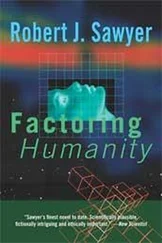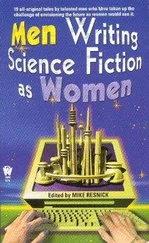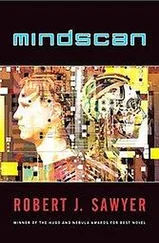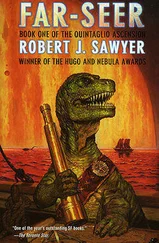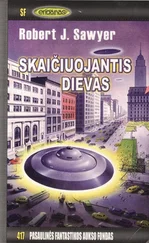But if the Hets were viral, then they had to … to conquer … other forms of life.
There were those who said humanity was inherently violent because of its carnivorous ancestors. How would the need to literally enslave cell-based life affect the psychology of the Hets? Would they be bent on conquest, driven to control living things? That could explain why they don’t like retaining the same animal bodies for any length of time. The drive to enslave could only be satiated by constantly taking over different creatures—
Hold on a minute, Brandy. Just hold on. Don’t go overboard.
But … viruses .
Come on, Brandy. You’re a scientist. Nothing wrong with a wild hypothesis, but you have to test it, prove it.
The Hets are a hive mind; they have no individuality. Maybe they don’t know anything about lying or deception.
So why not just ask the thing?
“You take over other lifeforms, don’t you?” I said. “So that you can use them.”
A double blink. “Of course.”
“And even if they’re intelligent life?”
And, again, a blink. “We are the only true intelligence.”
I shuddered. “I saw dinosaurs fighting mechanical tanks back there.”
The troodon tilted its head. “Oh.”
“Those were war games, weren’t they?”
“What is game?”
I shook my head. “ ‘Game’ is the wrong word, anyway. I mean they were practice sessions for a conflict.”
“Yess.”
“A conflict between your kind and some other intelligent life.”
“We are the only true intelligence,” the Het said again.
“All right, then: a conflict between your kind and those who made the mechanical tanks.”
“Yess.”
“Who started the conflict?”
“I don’t understand,” said the Het.
“What are you fighting over?”
“Over the ground.”
“No, I mean, what is the central issue in your conflict?”
“Oh, that.” The troodon scratched its lean belly. “They don’t want us to invade their bodies. They don’t want to be our slaves.”
“Shit.”
The Het looked at me through the troodon’s giant golden eyes. “I thought you required privacy for that activity,” it said.
And ye shall know the truth, and the truth shall make you free.
—John 8:32
When the Het and I arrived at the mud plain near the Sternberger , Klicks was nowhere to be seen. Judging by the position of the sun it was late afternoon, and I didn’t expect him to return before dinner. I could call him on the radio and tell him to hightail it back here, but there seemed no point in that. I couldn’t talk freely until after the Het left—and it gave no sign of wanting to do so. The troodon hopped from one foot to the other, its long tail held stiffly. After a moment, it tipped its drawn-out head up at the crater wall. Perched high above was our timeship.
“Take me inside,” it said suddenly.
It was bad enough being near the troodon, but to be near it inside a confined space… “I’d rather not,” I said.
The troodon turned its giant eyes on me, fixing me with a steady gaze. “Reciprocate, Brandon/Brandy. We allowed you to come inside our ship. Must now you allow us to come inside yours.”
Fancy that, I thought: my manners being corrected by a dinosaur. “But look at where the Sternberger is located,” I said, pointing up. “See how it juts out over the crater rim? I know you can make it up the crater wall, but that’s a big jump up to our hatchway. I doubt you can do it.”
The troodon was off like a shot, clambering up the crumbling crater wall, using its long, dangling arms to help it climb. “Is no problem for me,” it called once it had reached the top.
From the outside, our main door was painted electric blue, with a bright red trim—the mandrill’s mouth, one of the engineers had dubbed it. I had no doubt that the dinosaur could see that, since all living reptiles and birds have color vision. The loss of the ability to see color by dogs and many other mammals was a recent evolutionary occurrence, a trade-off to provide better sight in the dark. The troodon accomplished the same thing simply by having huge eyes. “In I go,” it called.
There was a vertical gap of a little less than a meter between the crumbling edge of the crater and the bottom of our main doorway, but the troodon had no trouble hopping up high enough to grab hold of the door handle. It then braced its feet against the blue door panel, lifted the latch, and swung inside with the door. Next, it let go, dropping to the deck inside the accessway. It couldn’t turn around in there—there wasn’t enough clearance for its stiff tail—but it swung its neck back to look down at me and waved.
Well, I was damned if I was going to let that thing go inside unsupervised. I climbed up the crater wall myself. Although the dirt was dry now, it had apparently rained briefly last night, and all the tyrannosaur tracks from before had been washed away. The troodon had already gone up the ramp that led to interior door number one and had made its way through into the cramped confines of our semicircular habitat. I hurried after it.
It was slowly circumnavigating the small room, looking at the food refrigerator and storage lockers, peering through the window in door number two at the garage, opening the medicine fridge—and quickly closing it when a blast of cold air hit its face—swinging open door number three to have a look at the tiny washroom, then coming along the curving outer wall past the kidney-shaped worktable, the radio console, and, at last, the mini-lab. Despite its protestation earlier, the troodon’s sickle claws did indeed sound like the ticks of a bomb on the steel floor.
“This controls your time machine?” it hissed, pointing at one of Klicks’s lab instruments.
I wasn’t about to move away from the access ramp to the outside door; I wanted to be able to escape in a hurry if the troodon tried anything funny. “No, that’s just a mineral analyzer. As I said before, all the working parts for time travel are up the timestream some sixty-five million years.”
The troodon stepped in front of the radio console and eyed it suspiciously. “What about this?”
“It’s just a fancy radio.”
“Radio?”
“Umm, electromagnetic telecommunications.”
The troodon tapped the console with a curved claw. It seemed fascinated by the fake plastic woodgrain that ran around the edges of the unit. “Yes, we have such communications. But who can you call? Does your radio operate across time?”
“No, no. It’s just regular radio gear. Our timeship was dumped from a helicopter—a flying vehicle. The radio let us communicate with the copter pilot, and with Ching-Mei—that’s the person who invented the time machine—at the ground base. The base was many kilometers away, at the Tyrrell Field Station. We also use the radio to relay signals from our walkie-talkies—portable transceivers—and for our homing devices to lock onto. Oh, and the radio used satellite signals to determine our exact position at the time of the drop from the helicopter, crucial for the Throwback to work. It can even send signals to search-and-rescue satellites, in case we return at other than our expected location. Highly unlikely, or so we’re told, but it could happen.” I gestured at the gleaming panel. “Anyway, it’s far more sophisticated than what we needed, but the corporate sponsor—Ward-Beck in this case—wanted to showcase this particular piece of equipment. Our actual needs were pretty irrelevant.”
“Very strange culture have you,” said the troodon.
I forced a laugh. “That it is.”
Klicks drove back into our camp shortly after sunset, parking the Jeep so that it would be in the morning shade of the crater wall. The troodon and I met him down on the mud flat. I held up my A W can so that Klicks could see the intact pull-tab. He opened his jacket’s breast pocket and pulled out the Twinkies. They were slightly squished—hard to avoid that with Twinkies—but certainly showed no sign of having been deliberately flattened.
Читать дальше

